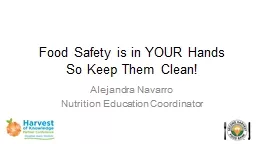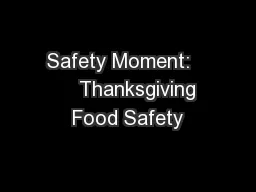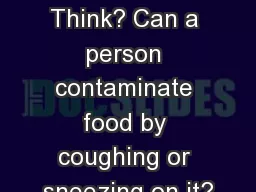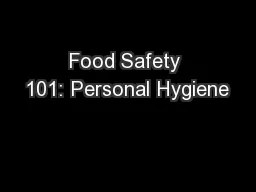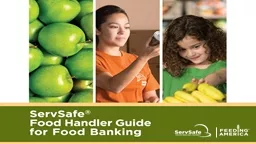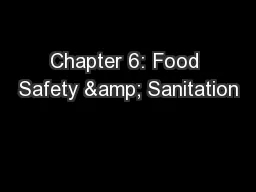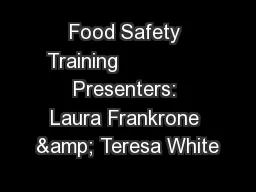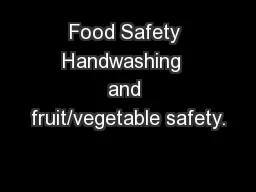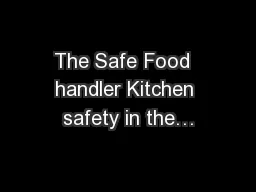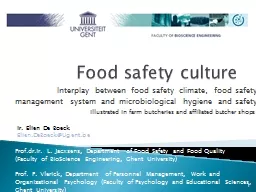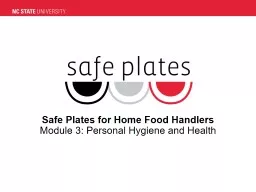PPT-Food Safety is in YOUR Hands
Author : min-jolicoeur | Published Date : 2018-12-07
So Keep Them Clean Alejandra Navarro Nutrition Education Coordinator Todays Agenda Your Role in Keeping Food Safe Good Personal Hygiene Receiving and Storing Food
Presentation Embed Code
Download Presentation
Download Presentation The PPT/PDF document "Food Safety is in YOUR Hands" is the property of its rightful owner. Permission is granted to download and print the materials on this website for personal, non-commercial use only, and to display it on your personal computer provided you do not modify the materials and that you retain all copyright notices contained in the materials. By downloading content from our website, you accept the terms of this agreement.
Food Safety is in YOUR Hands: Transcript
Download Rules Of Document
"Food Safety is in YOUR Hands"The content belongs to its owner. You may download and print it for personal use, without modification, and keep all copyright notices. By downloading, you agree to these terms.
Related Documents

